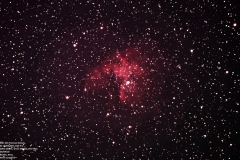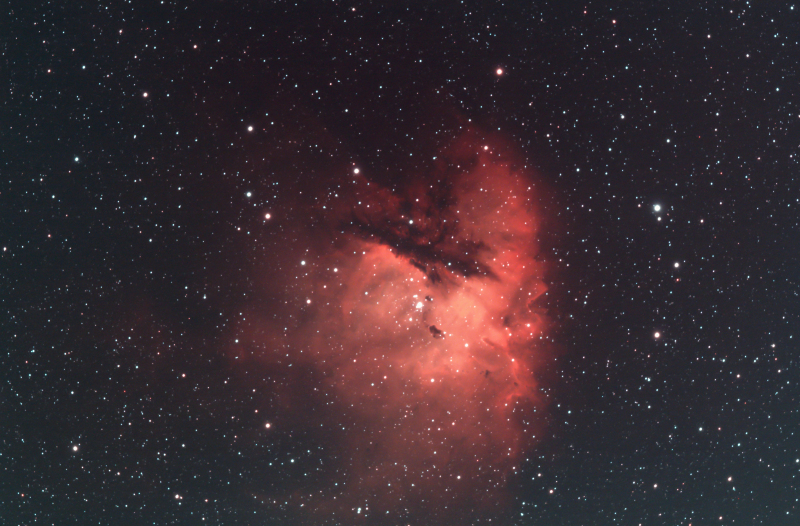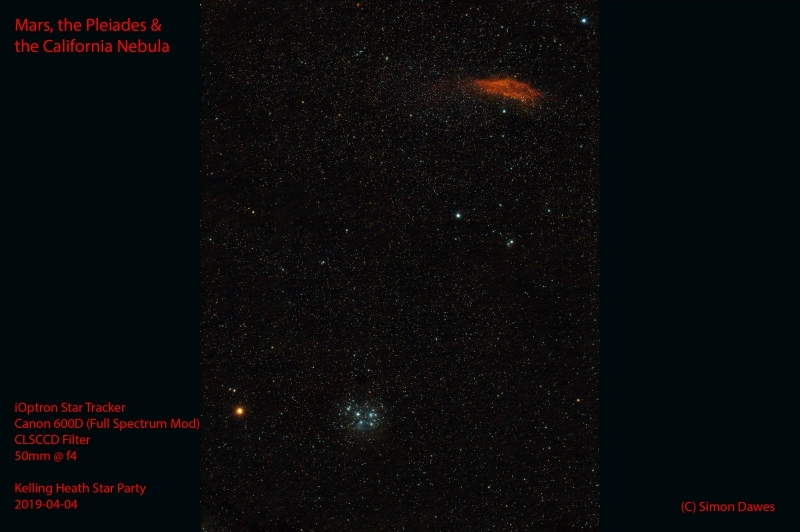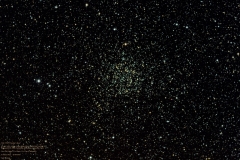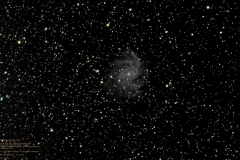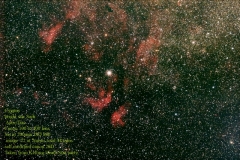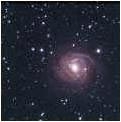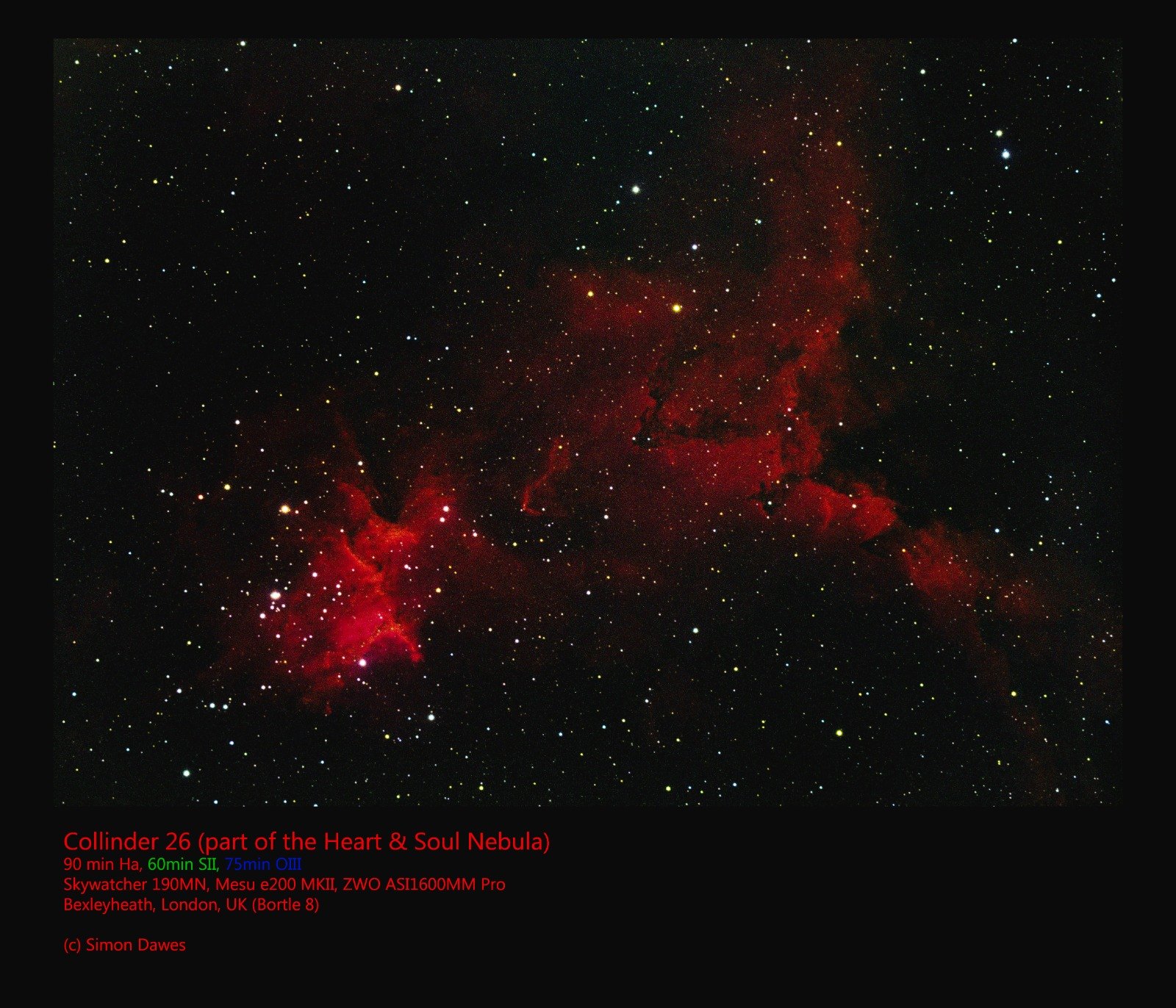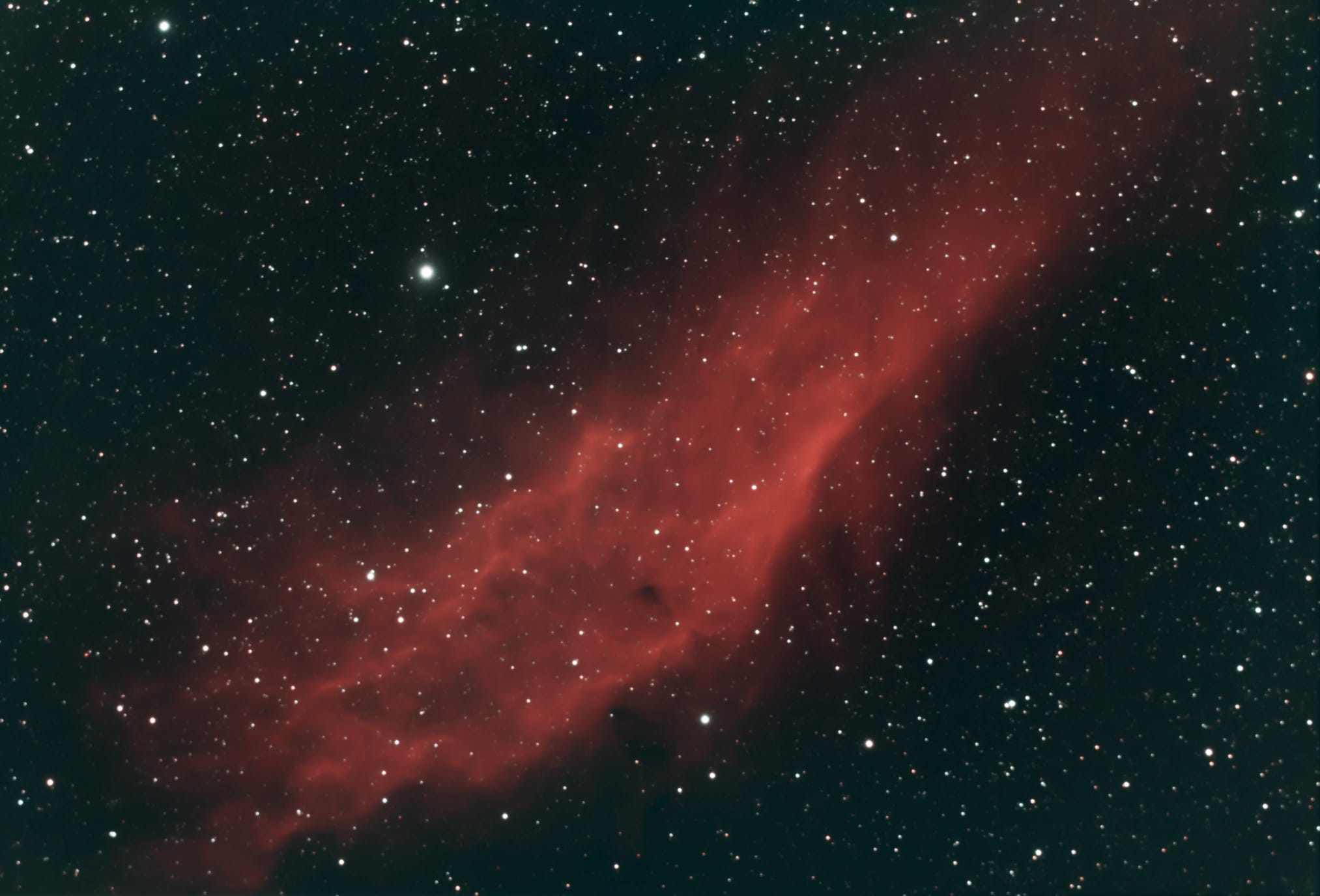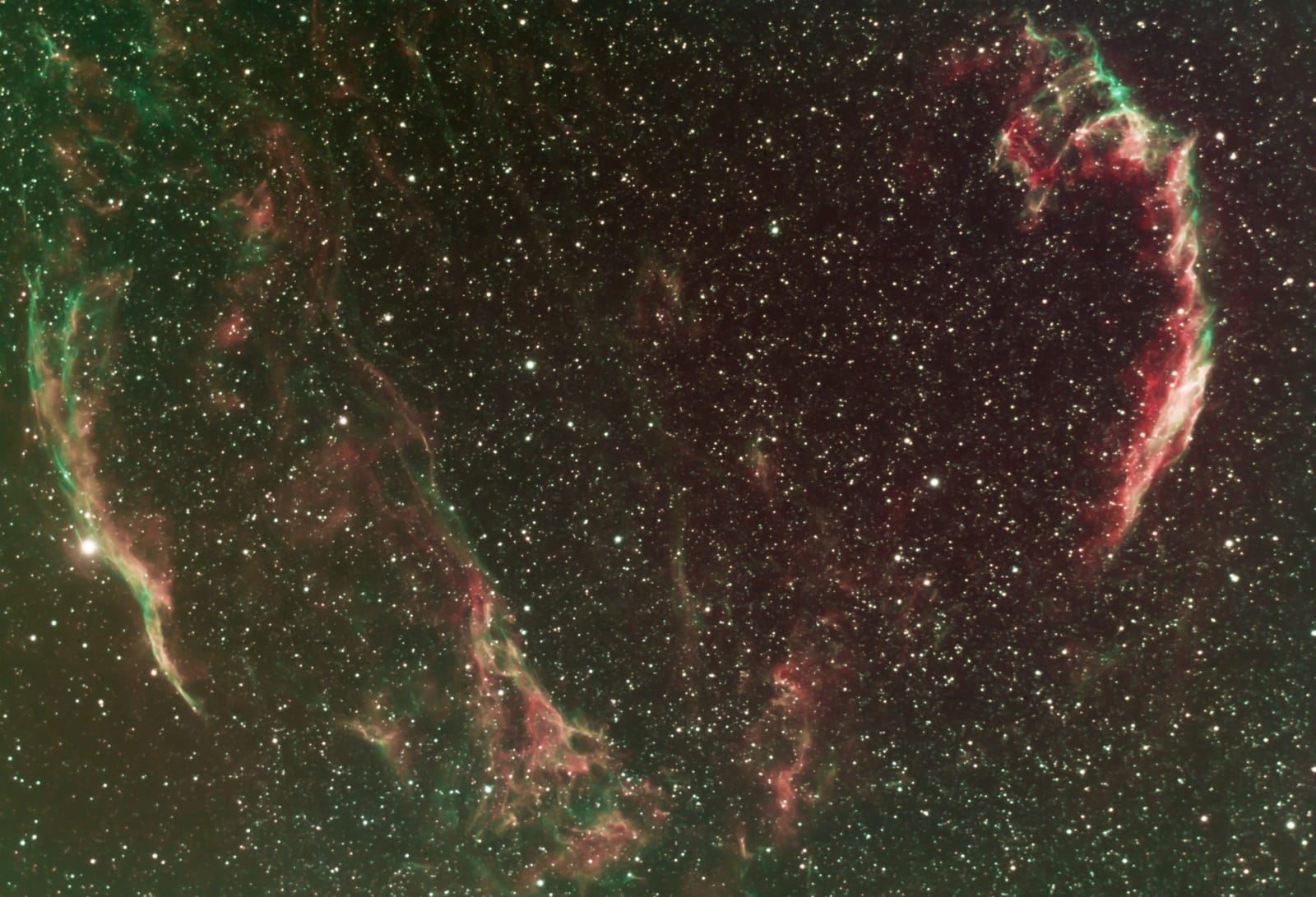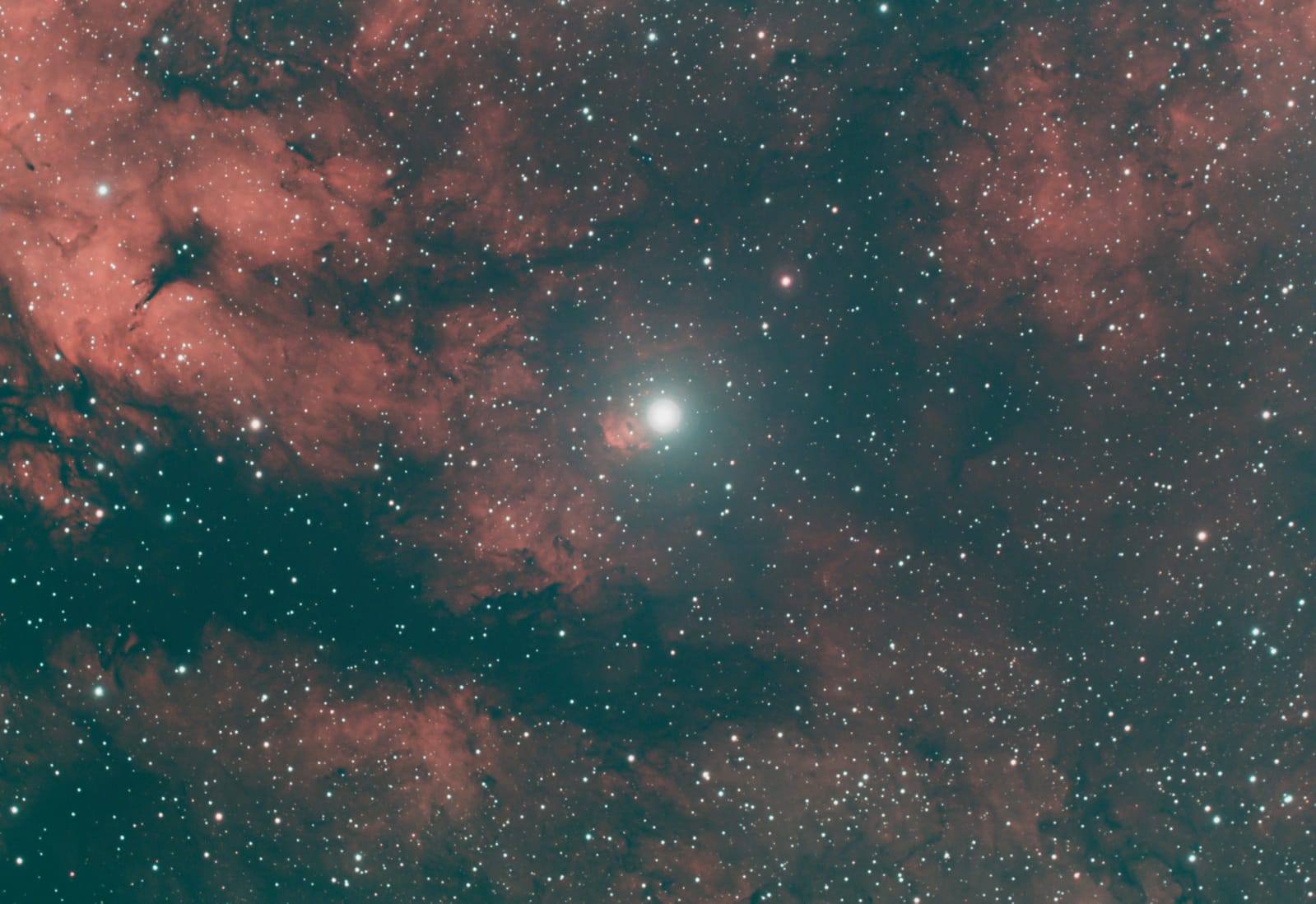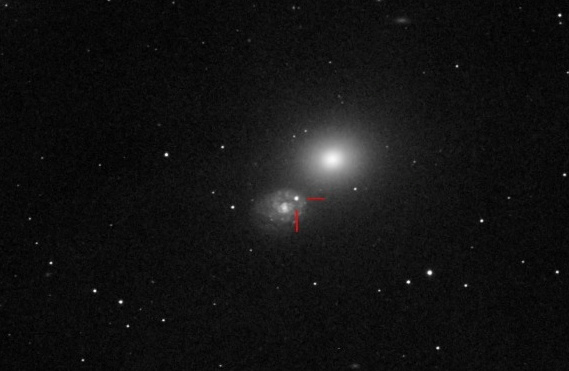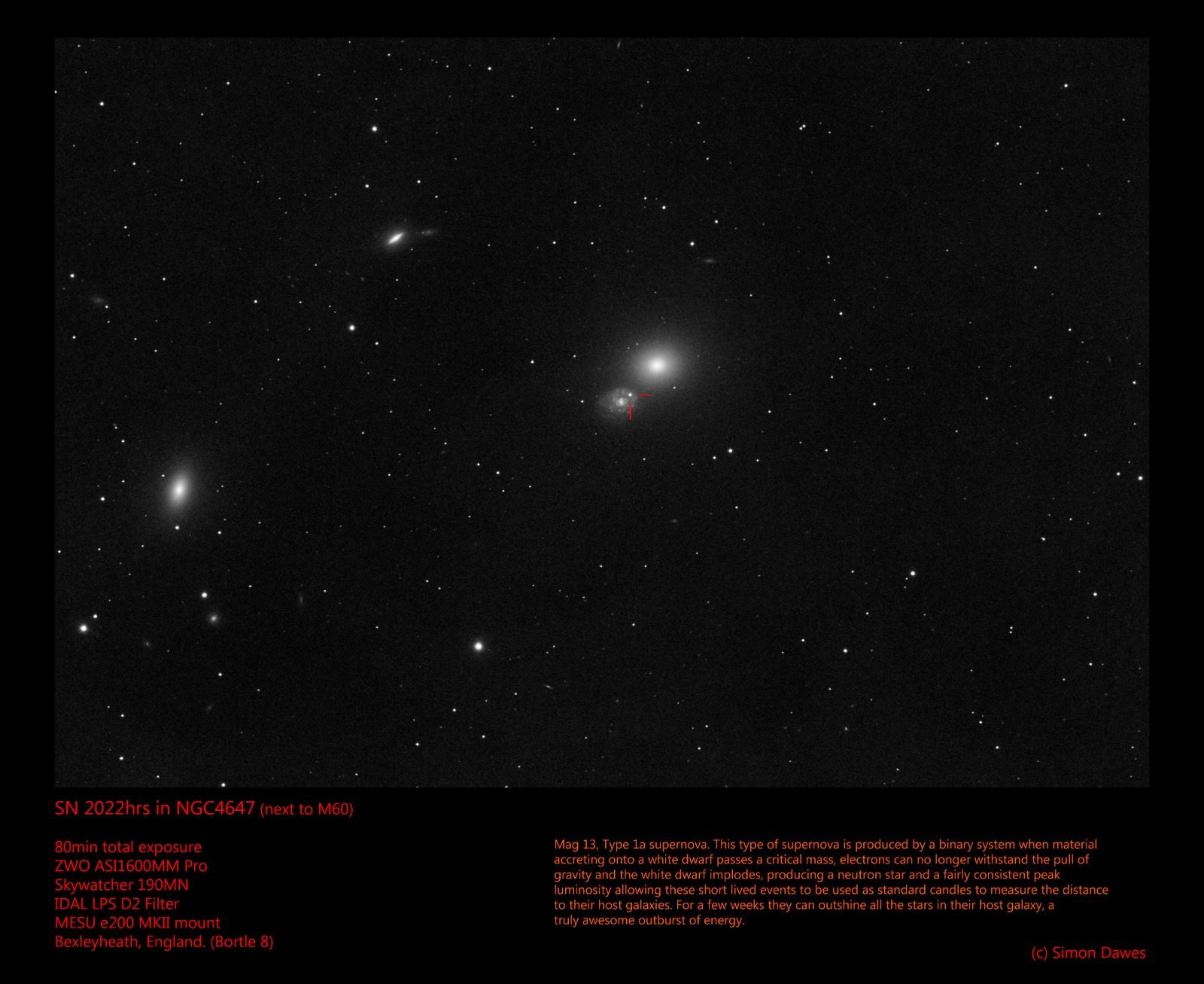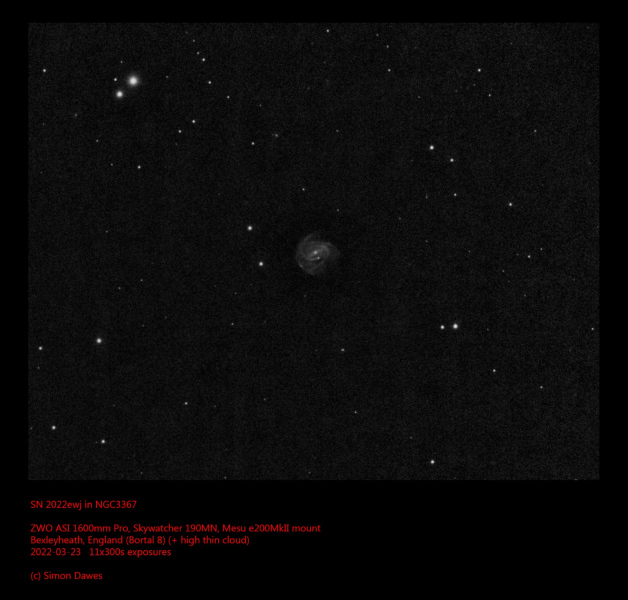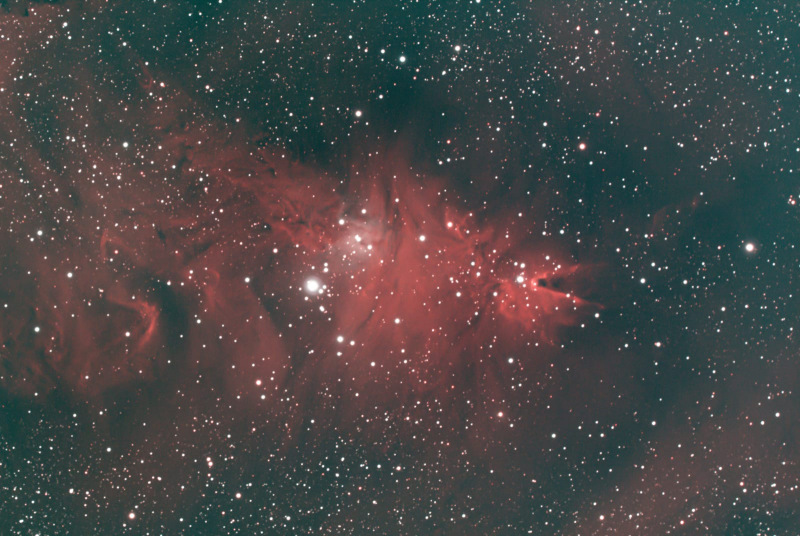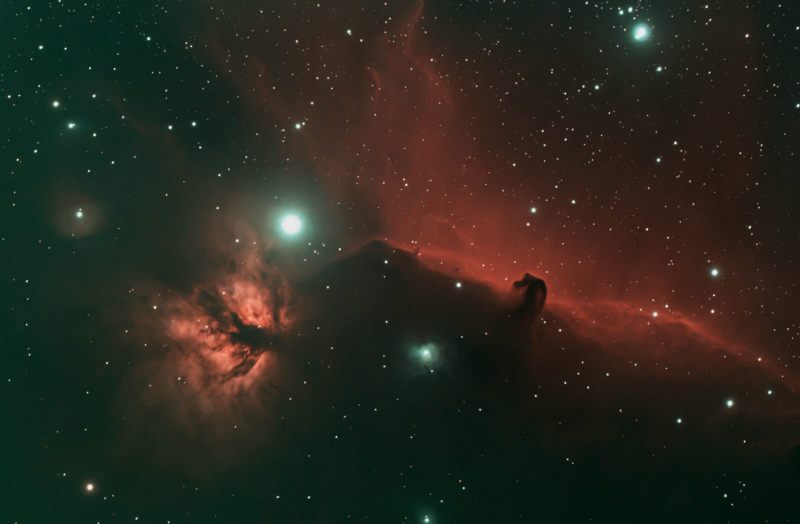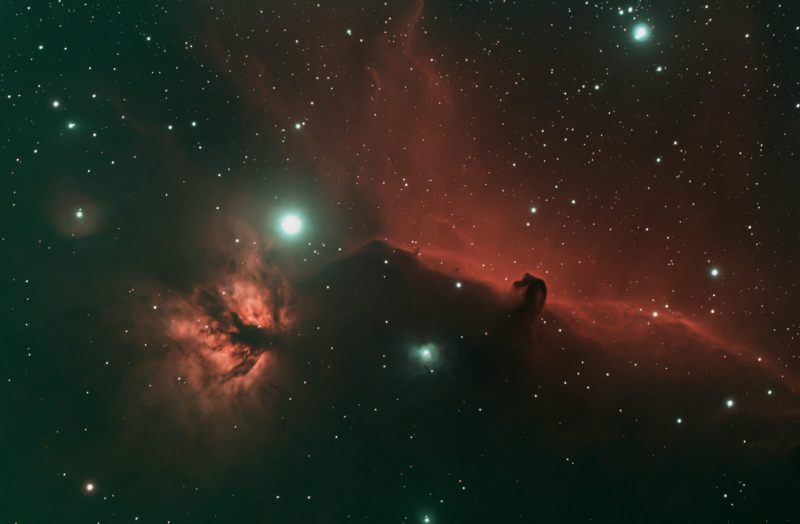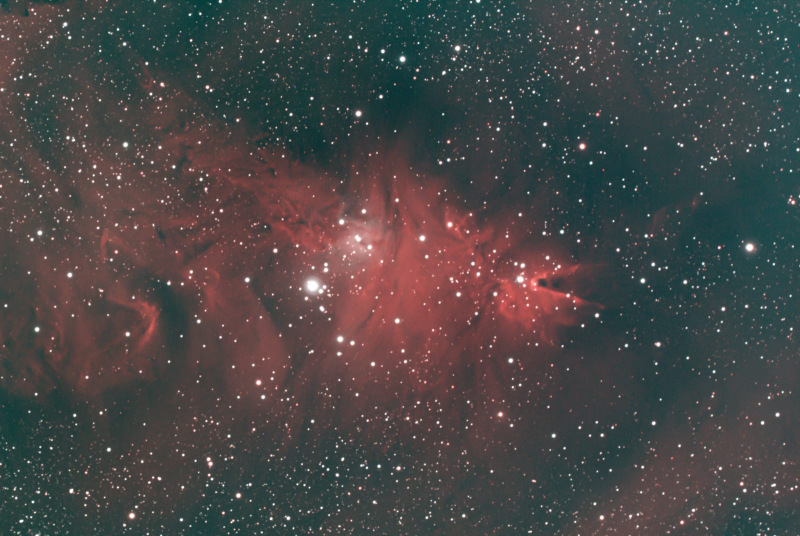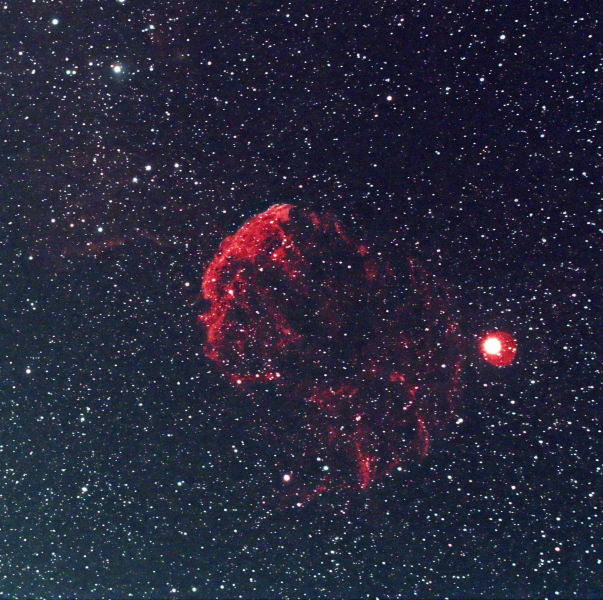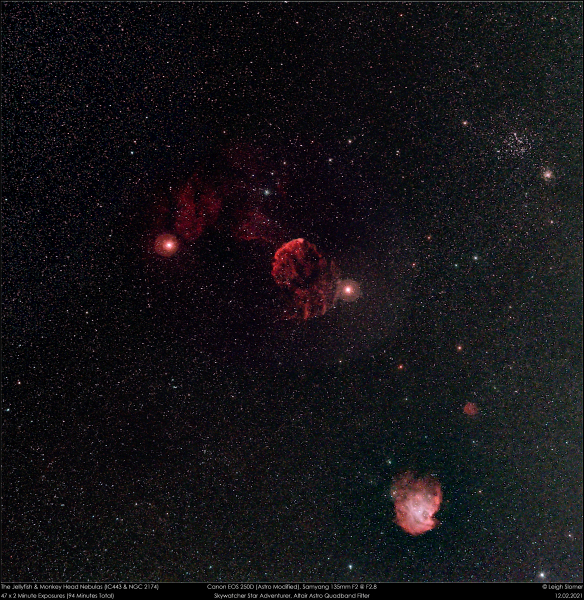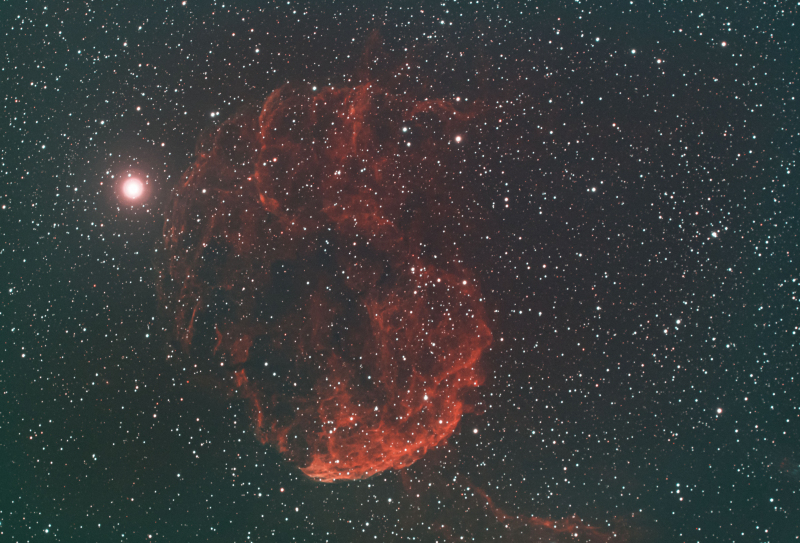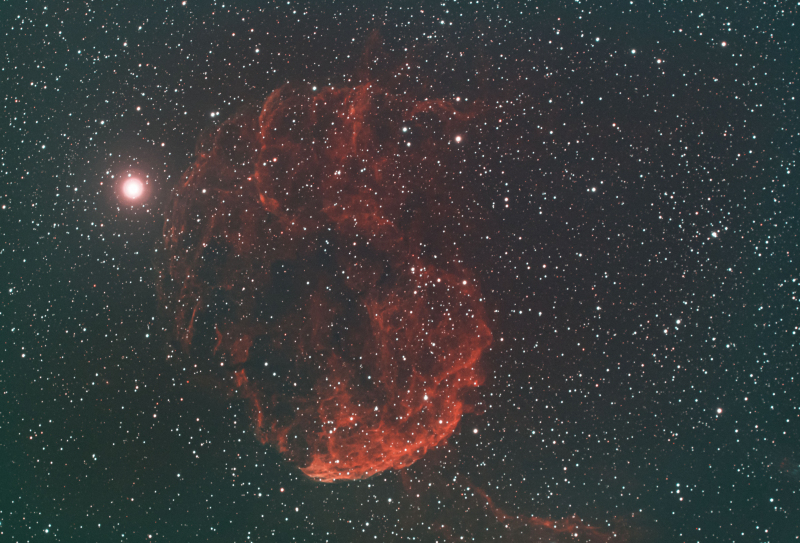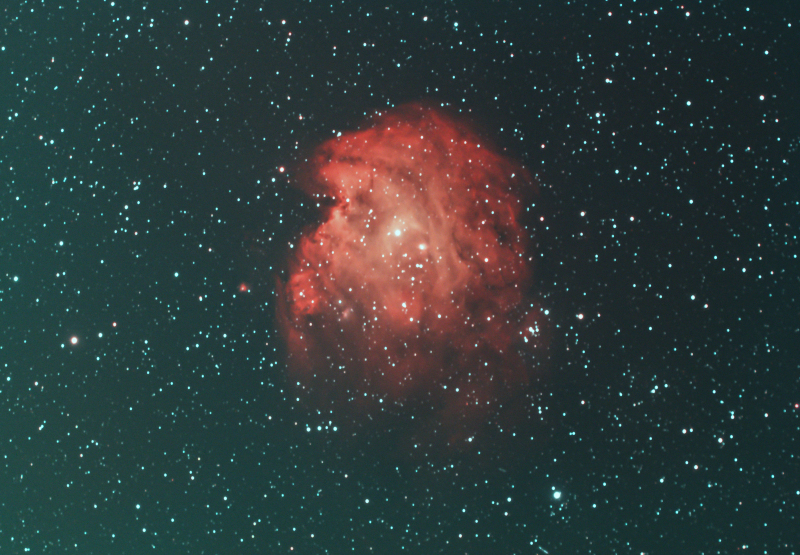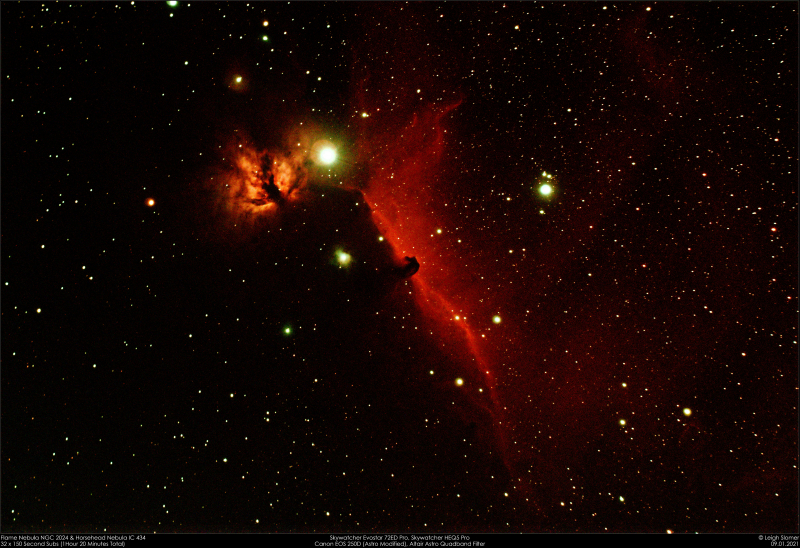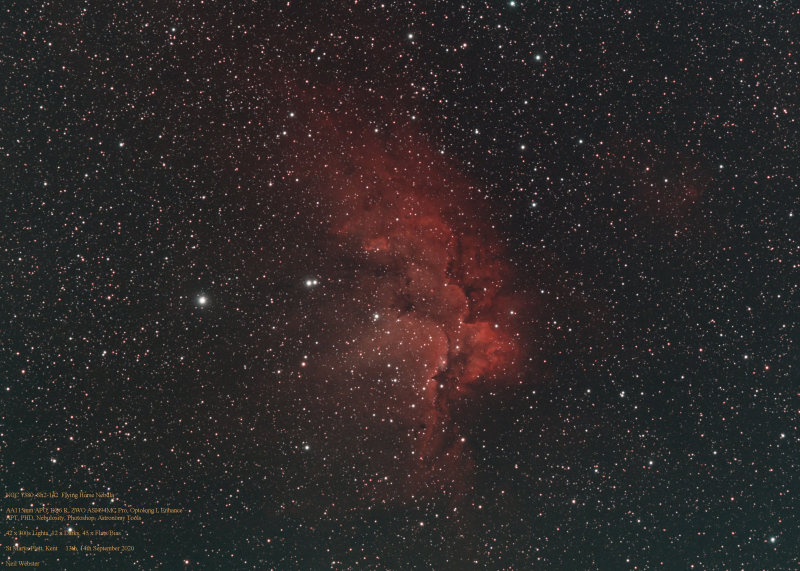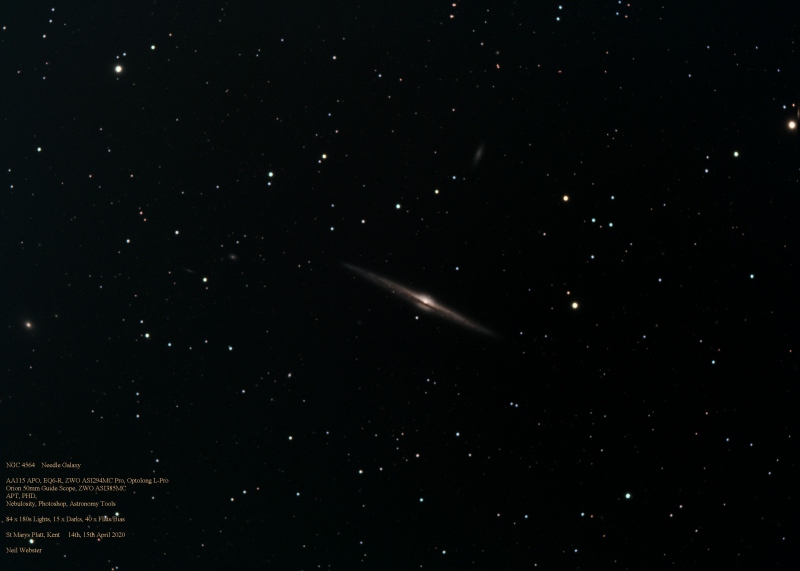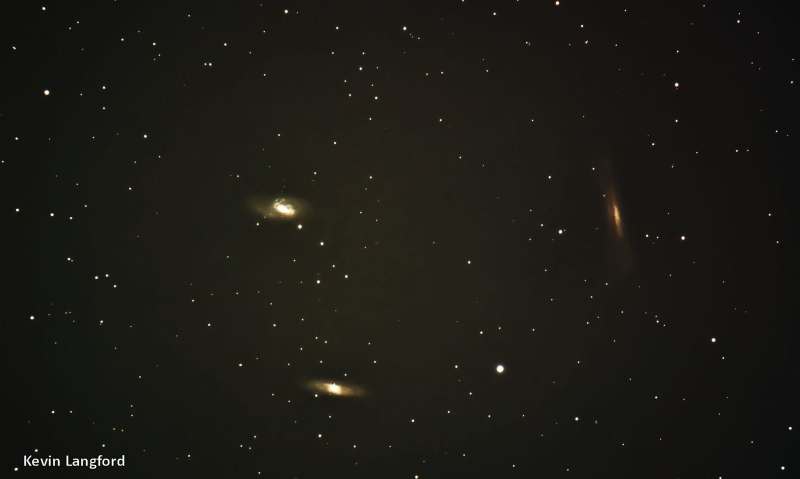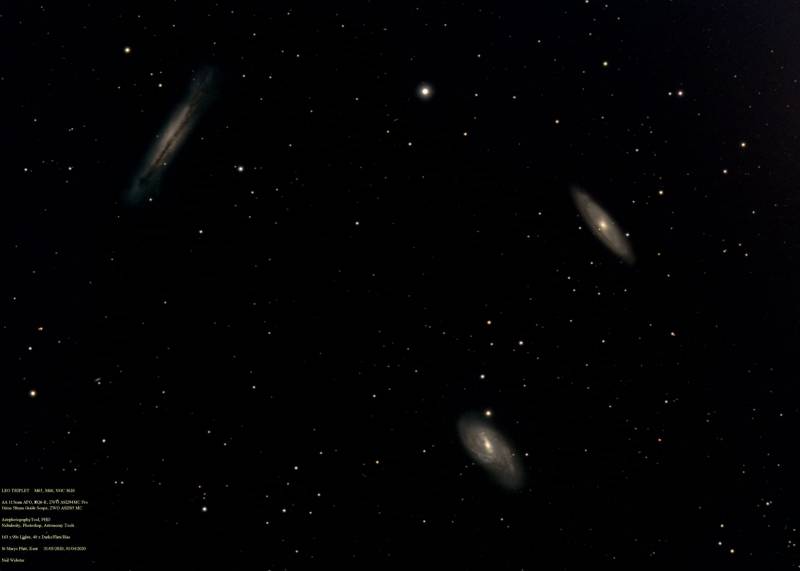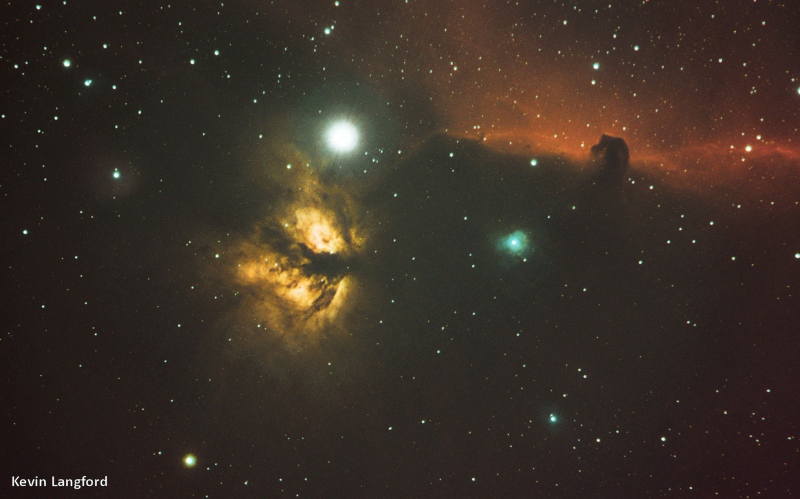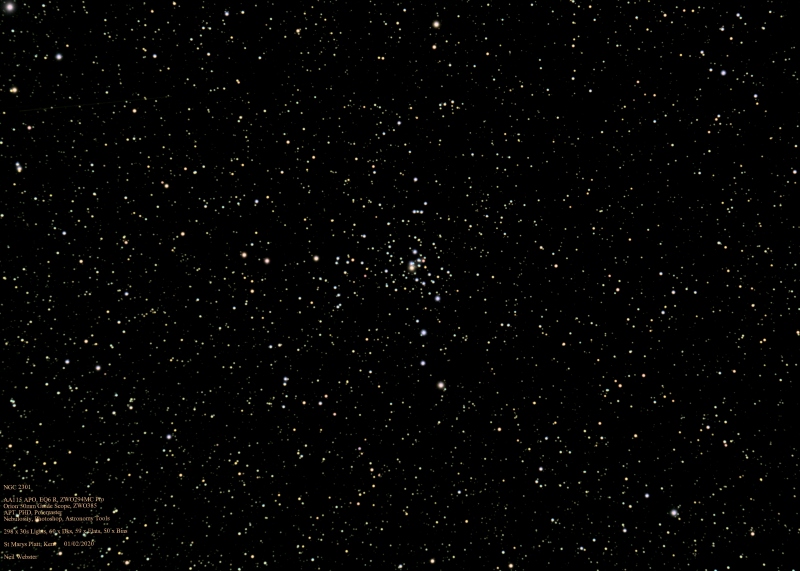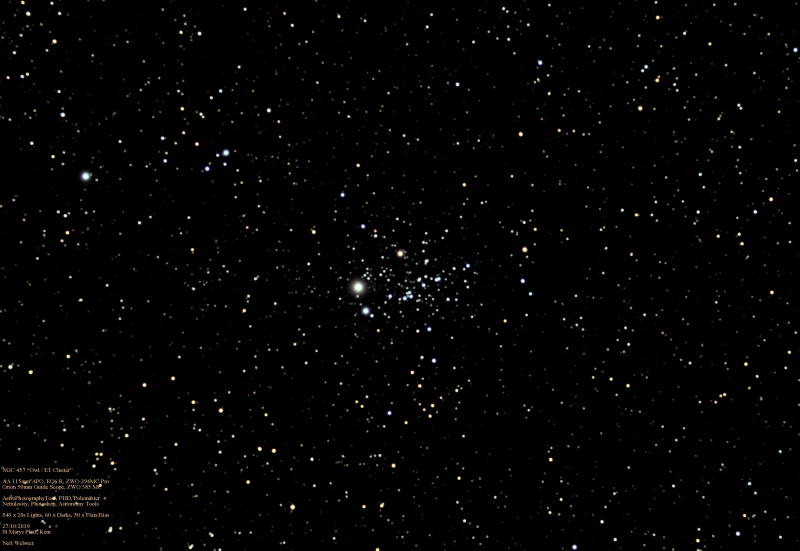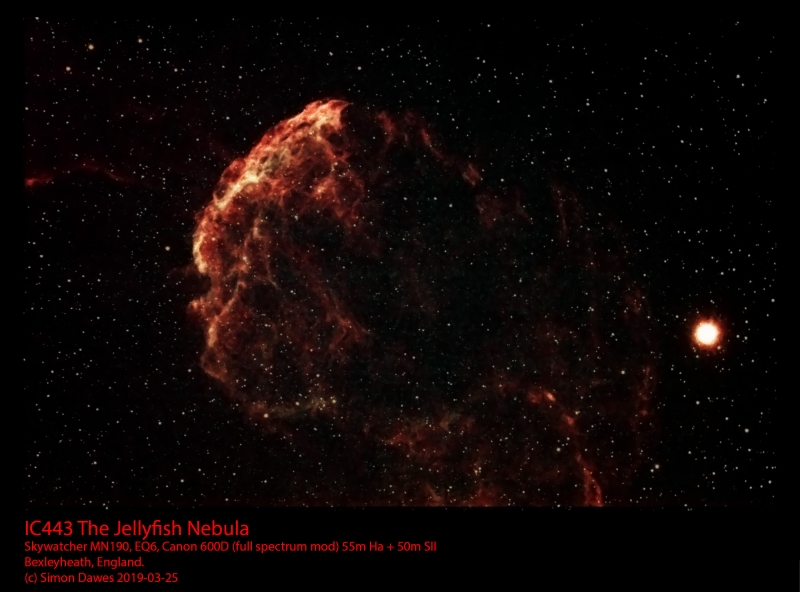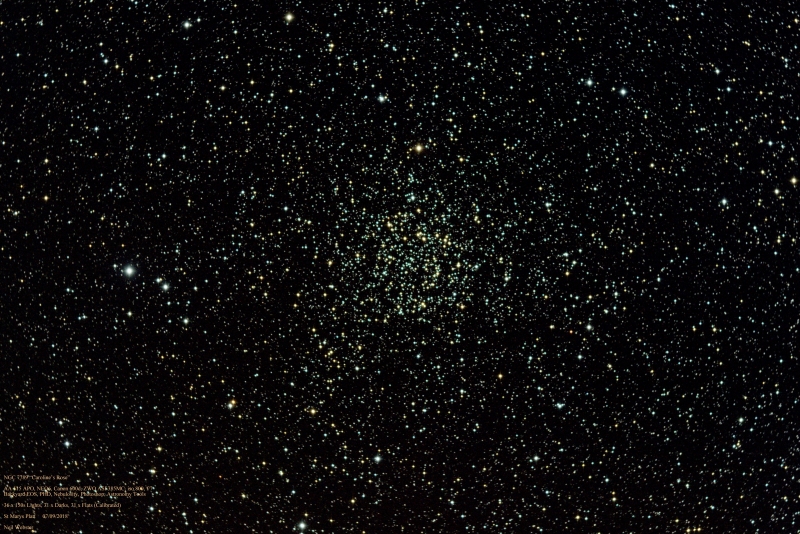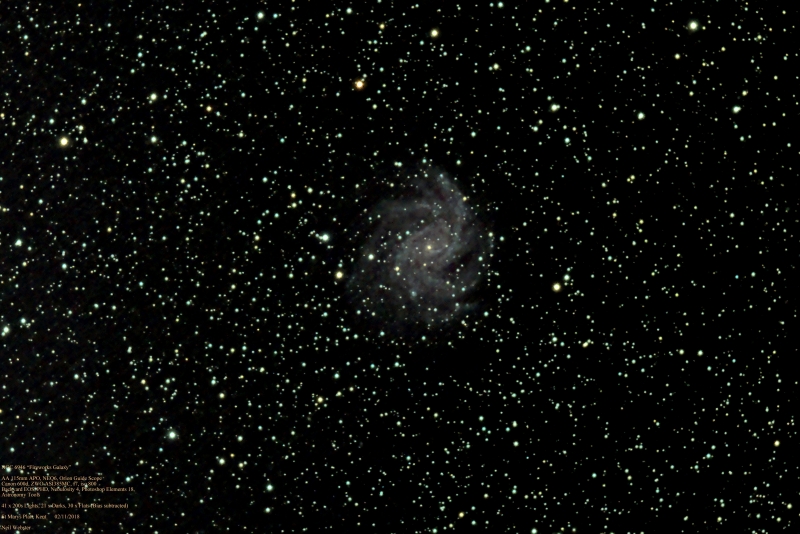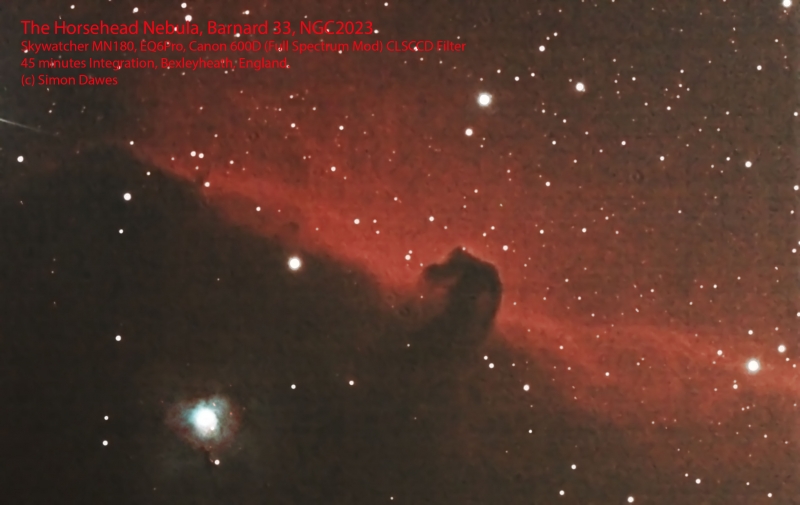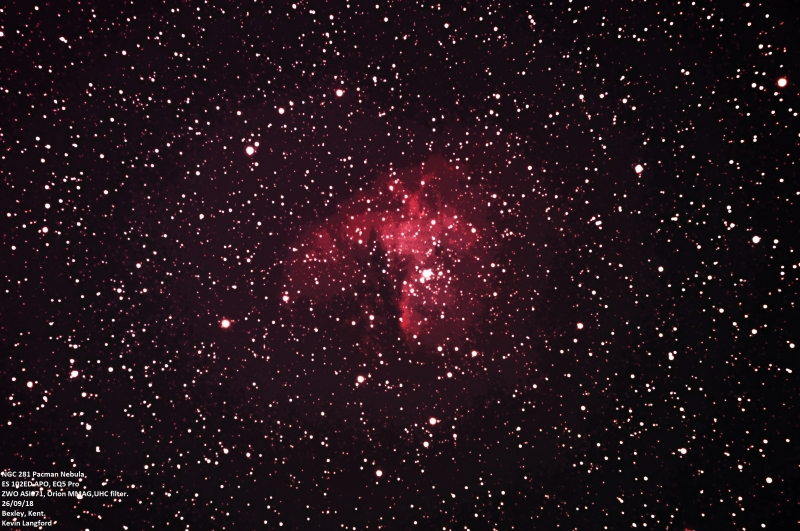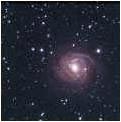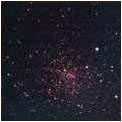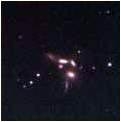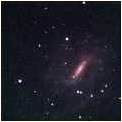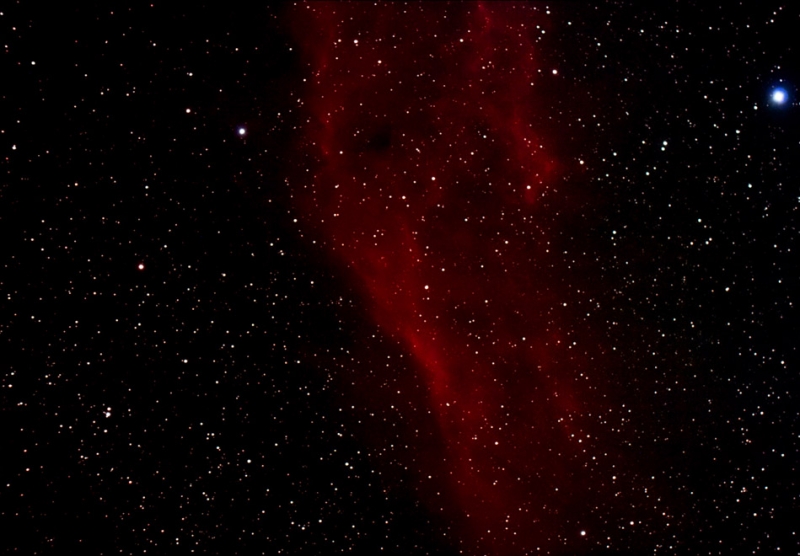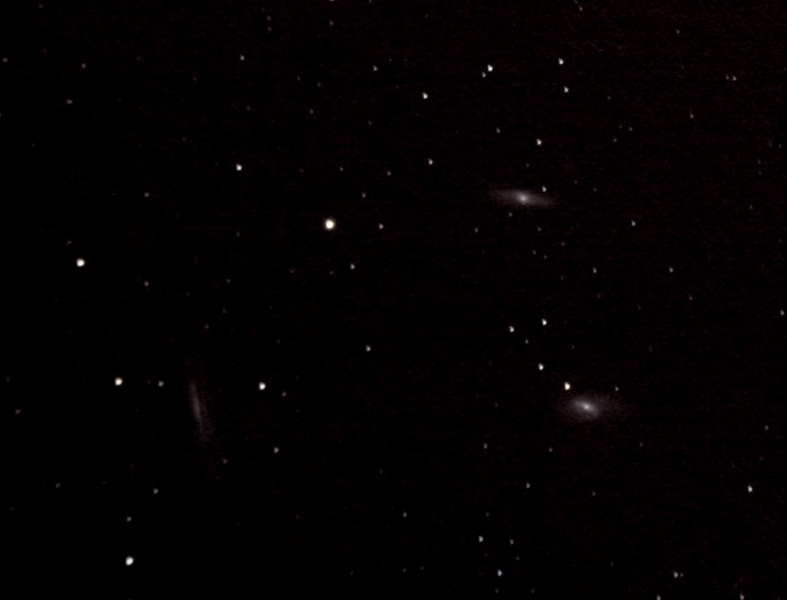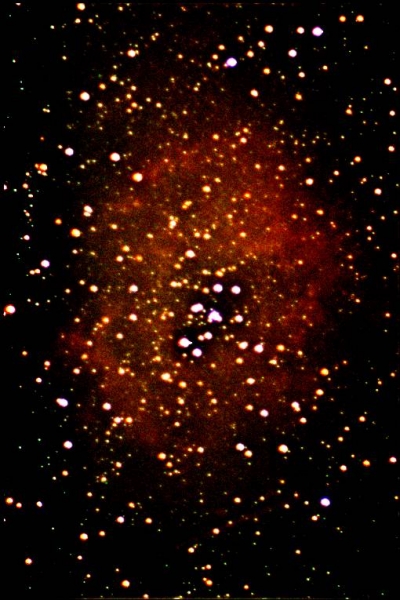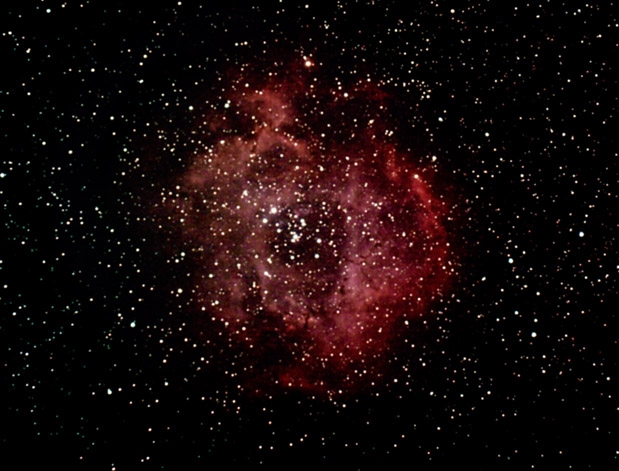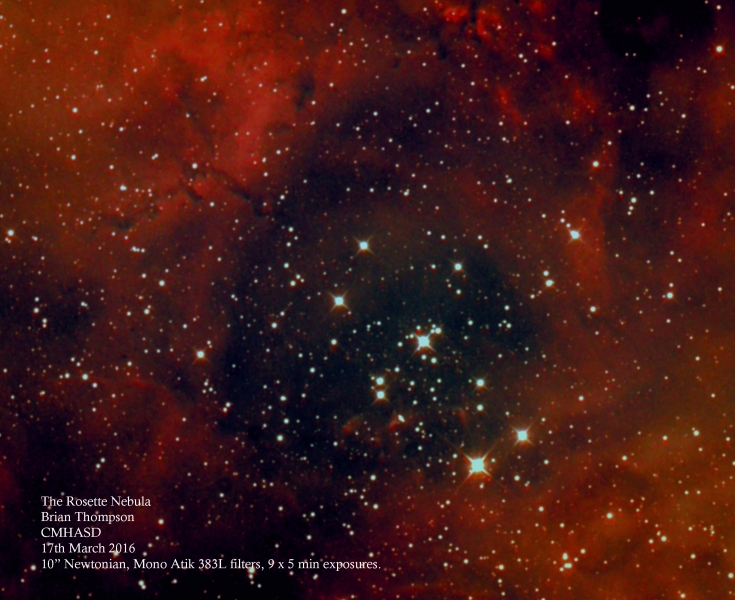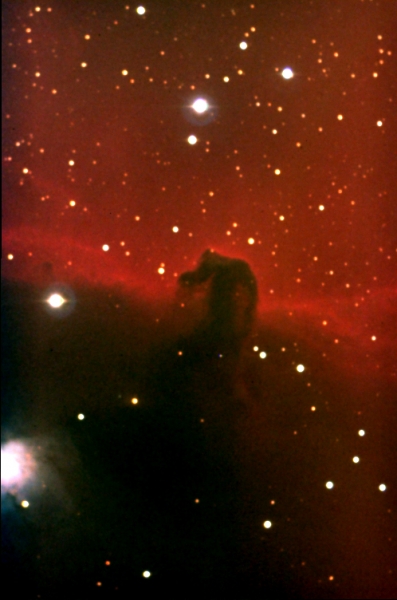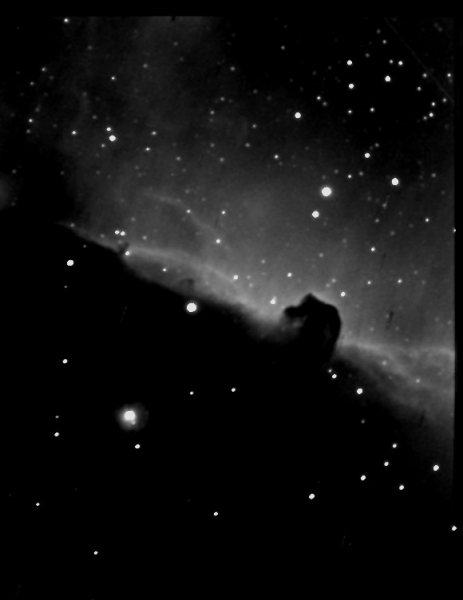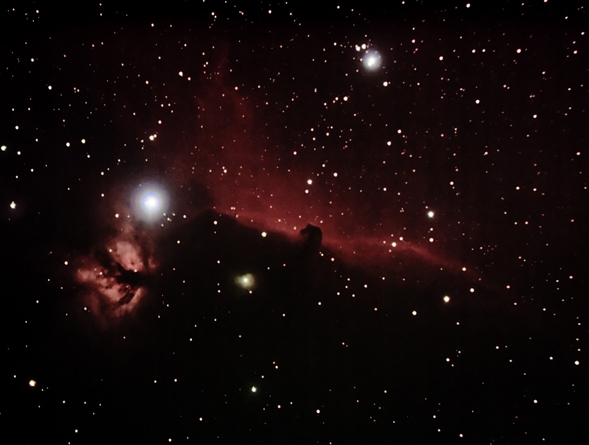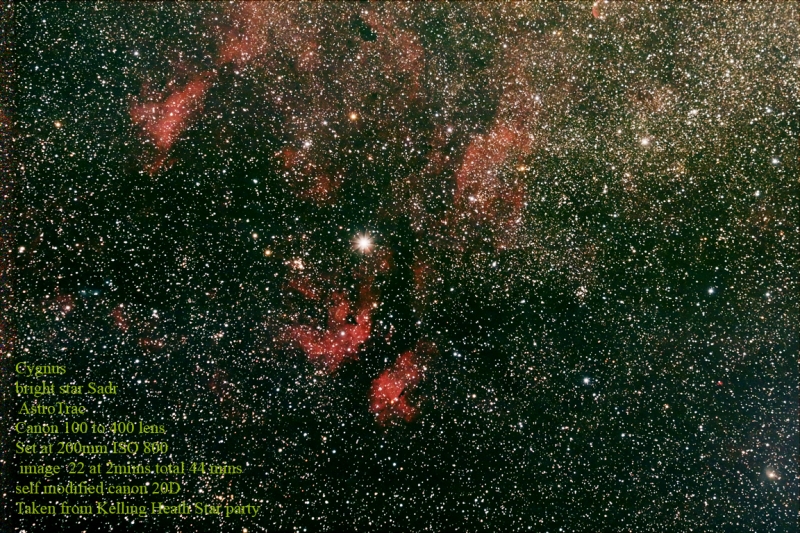So you have observed the Messier and Caldwell objects and want to know what other wonders are out there, the Herschel 400 would be a good start, but if you are after inspiration why not look at what others are observing by having a browse below.
The Pacman Nebula, NGC281, IC11
The Pacman Nebula, NGC 281, IC 11 or Sh2-184 is a bright emission nebula and part of an H II region in the northern constellation of Cassiopeia and is part of the Milky Way’s Perseus Spiral Arm. It is 20×30 arcmin in size.
Images by Kevin Langford
The Pleiades, Mars and the California Nebula
In April 2019 Mars was close to M45 (the Pleiades) and NGC 1499 and this coincided with the Kelling Heath Star Party. Unfortunately at this time of year Taurus is very low, setting in the late evening making this a difficult object to image, my attempts to stack and then process with Deep Sky Stacker were hopeless, so I turned to Astro Pixel Processor (using a 30 day free trial) which has a very easy to use light pollution killer, this allowed me to remove the gradient that resulted from the very low elevation and trees that crept into the field.
Total exposure is 84 minutes, from 30s subs. Tracking was achieved with an iOptron Star tracker, camera was a Canon 600D with a full spectrum mod and a CLSCCD clip-in filter.
Carolines Rose, NGC7789
The Fireworks Galaxy, NGC 6946
Open Cluster in Vulpecula, NGC 6940
Open Cluster in Vulpecula.
Observation:
The cluster is bright enough to be seen even with small binoculars, which can partially resolve it.
Images by Neil Webster

Altair Astro 115 APO, NEQ6, Canon 600D, ISO800, f/7, ZWO ASI385MC
Exposure 35x 120s
St Marys Platt, England
2018/10/06
Open Cluster, NGC 6811 in Cygnus
NGC 6811 is an open cluster in the constellation of Cygnus. It has an angular size half that of the full Moon and includes about 1000 stars of roughly similar magnitude. It has also been called “The Hole in the Cluster” because of its dark centre.
Observing:
It appears as a hazy patch in 10x binoculars, but it is best seen at around 70x with a moderate-aperture telescope.
Images by Neil Webster
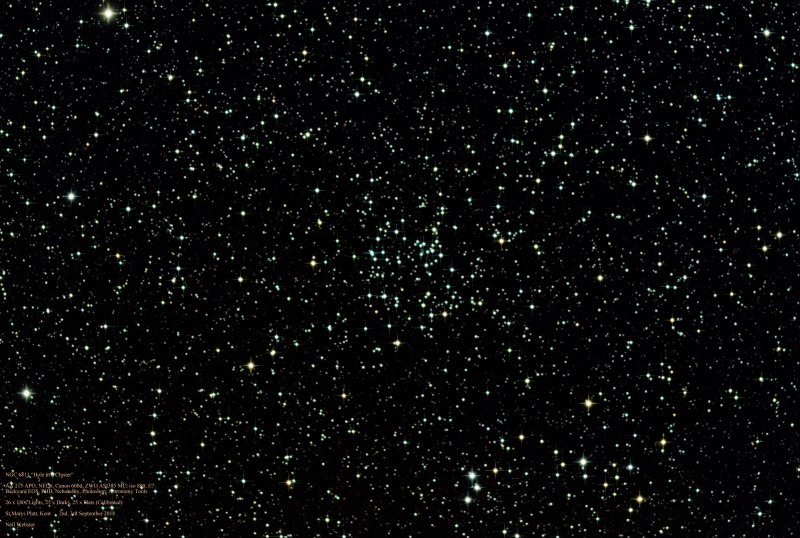
‘Hole in a Cluster’
Altair Astro 115 APO, NEQ6, Canon 600D, ZWO AS1385 MC, ISO 800, f/7
Exposure: 26x 180s
St Marys Platt, England
Open Cluster, NGC6633 in Ophiuchus
NGC 6633 is an open cluster, in the constellation Ophiuchus. Discovered in 1745-46 by Philippe Loys de Chéseaux and independently rediscovered by Caroline Herschel, and catalogued as H VIII.72.
This cluster is nearly as large as the full moon, and contains 30 stars which make it shine at a total magnitude of 4.6; the brightest star is of mag 7.6. Its age was estimated at 660 million years.
Images by Neil Webster
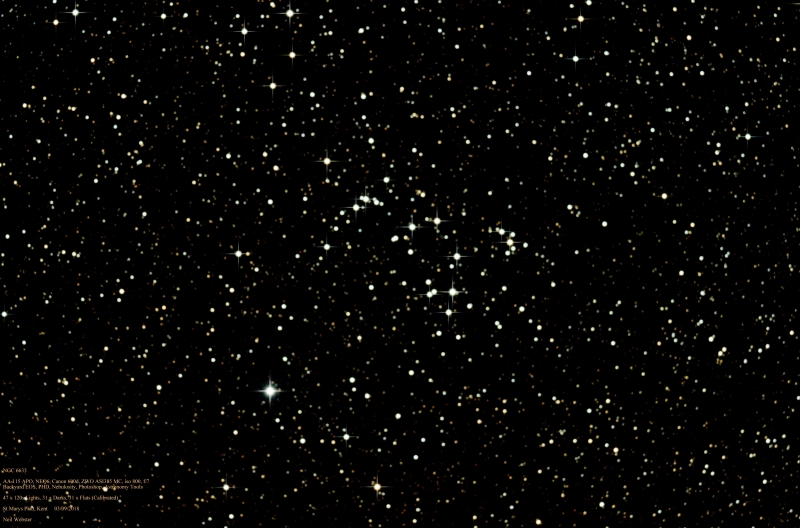 Altair Astro 115 APO, NEQ6, Canon 600D, ZWO AS1385 MC, ISO 800, f/7
Altair Astro 115 APO, NEQ6, Canon 600D, ZWO AS1385 MC, ISO 800, f/7
Exposure 47x 120s
St Marys Platt, England
Open Cluster, NGC225 in Cassiopeia
NGC255, the Sail Boat Cluster is an open cluster in Cassiopeia.
Images by Neil Webster
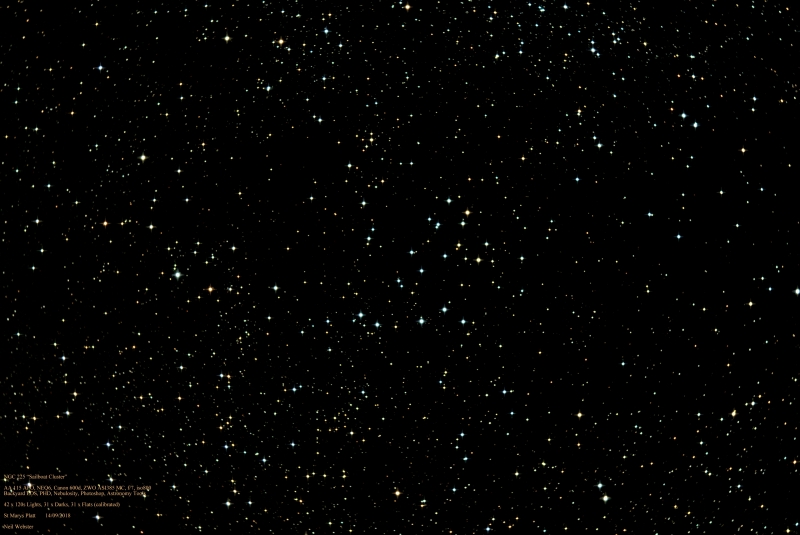
NGC255, open cluster, Sail Boat Cluster in Cassiopeia, Image by Neil Webster
Altair Astro 115 APO
Canon 600D, ZWO AS1385 MC, F7, ISO800, Exposure 42x 120s
Taken on 14/09/2018, St. Marys Platt, England.
Gamma Cygni Nebula, IC1318
The Gamma Cygni Nebula describes the patches of nebulosity around Gamma Cygni, Sadr and consists of emission nebulae, dark dust clouds and star clusters. The area spams 3 degrees of sky so is a good subject to image with a small wide field refractor or prime lens on a tracking mount.
Face on Spiral in Aquila, NGC6814
This face on spiral galaxy lies at a distance of about 66 million light years and is about 75,000 light years across or about half the size of the Milky Way Galaxy. This object has a fairly low surface brightness, and so will be a tougher to observe than the mag 11.3 would suggest. You’ll need dark skies and a large aperture to really appreciate this.
Other Images
Sun | Comets | Mercury | Venus | Atmospheric Optics | Meteors | Auroa and NLC | Moon | Minor Planets | Mars | Jupiter | Saturn | Uranus | Neptune | Messier | Caldwell | All Deep Sky | Conjunctions | Transits | Solar Eclipse | Lunar Eclipse | Wide Field |ISS & Space Junk | Exo-Planets
All images are copyright. Permission must be sought to from the image owner to the use of any of these images.

